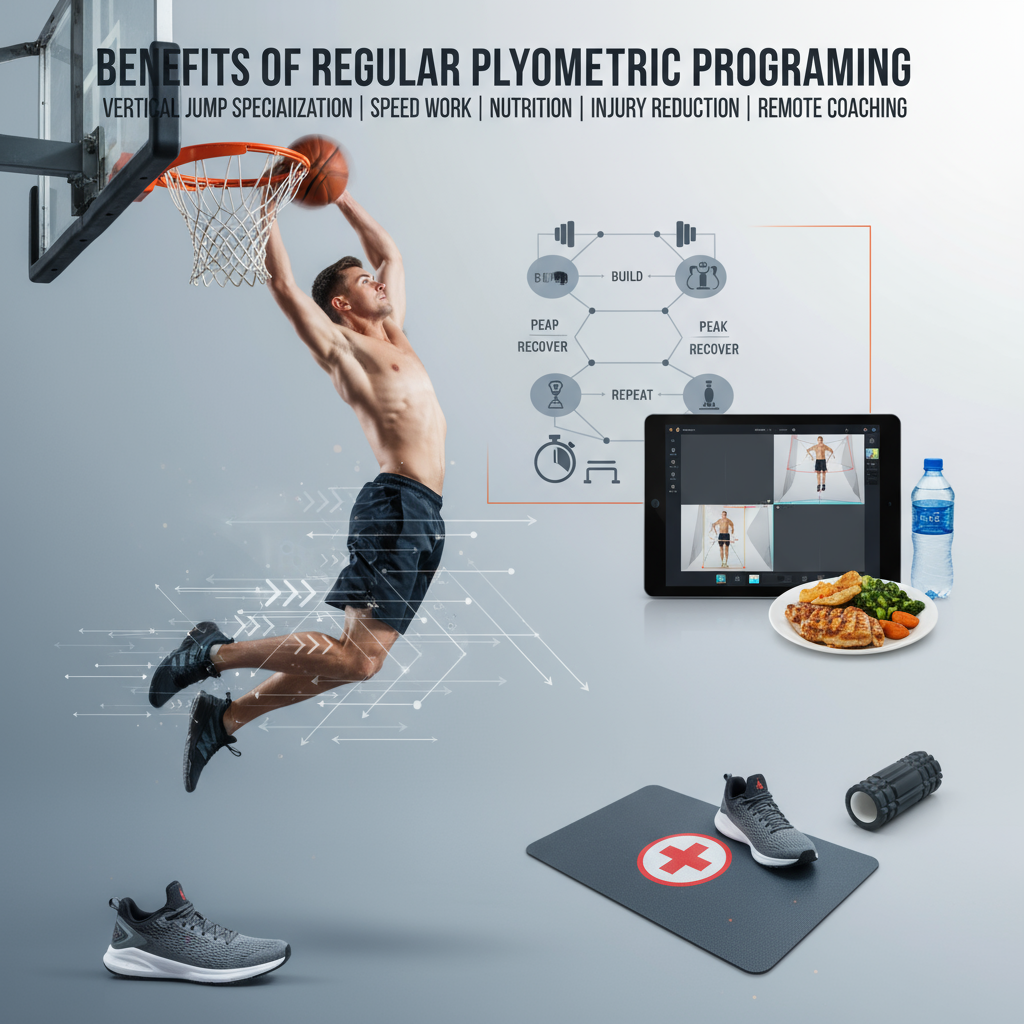This is for competitive athletes, parents, and coaches who want faster, higher, stronger—without burnout or mystery injuries. You’re juggling conflicting advice: how many plyos are safe, what to eat on game day, why your hamstrings keep tightening up, and whether remote coaching actually works. You’re worried about plateaus, sore knees, and wasting months on the wrong plan. Jump High Now unifies vertical jump specialization, periodized strength & conditioning cycles, sport-specific speed work, athlete nutrition planning, and injury risk reduction protocols—supported by remote coaching with video analysis—to turn confusion into clear, trackable progress.
What is vertical jump specialization—and does it really work?
Short answer: yes, if it’s targeted. A vertical jump block layers elastic plyometric programming with max-strength and high-velocity lifts, then teaches landing mechanics so you can express power safely. I’ve seen athletes add 4.1 inches in 12 weeks by dialing jump frequency, managing ground contacts, and syncing strength days with low-fatigue skill work. Take Marcus, a 17-year-old guard—he added 5.2 inches and cut his ground contact time by 41 ms during preseason hoops.
How often should I do plyometrics for jump gains?
Twice weekly is the sweet spot for most intermediates—48 to 72 hours apart—with 90 to 140 total ground contacts per session (intensive drills count more than pogo hops). Use a simple structure: extensive plyos (contacts: ~60) on speed days; intensive jump/bound work (contacts: ~40) before heavy lifts. Stop sets when landings get noisy. Why? Because quality drops fast, and your tendons tell on you.
How should strength & conditioning cycles be structured for athletes?
Think waves, not random hard days. A practical template: 21-day accumulation (volume focus, RPE 6–7), 14-day intensification (heavier, RPE 7–8), 10-day realization (velocity emphasis, RPE 6–7) before a test-deload. Track bar speed on key lifts—if squat velocity at 0.60 m/s improves at the same load, you’re winning. And don’t cram everything every day—microdose accessories so you still move fast.
What about sport-specific speed work?
Use a 7-day microcycle: 2 max-velocity sessions (flying 20s, wicket runs), 1 change-of-direction session (deceleration angles, curvilinear sprints), 1 tempo/recovery run. Keep max-velocity work under 240 total meters per session. It’s like choosing between a Ferrari and a bicycle—top speed requires fresh CNS, not junk volume.
What should athlete nutrition planning look like around training?
Pre-session: aim for 2 g/kg carbs and 0.3 g/kg protein about 2.5 hours prior; add 500–700 ml fluids with 500 mg sodium if it’s hot or you’re in a tournament weekend. During: for sessions over 75 minutes, sip 30 g carbs per hour. Post: 1.2 g/kg carbs + 0.3 g/kg protein within 45 minutes—chocolate milk plus a banana works. I think consistency beats perfection here, always.

How do I reduce injury risk without losing performance?
Use targeted injury risk reduction protocols that reinforce what you actually load:
- Hamstrings: Nordic lowers 2×6, 2x/week; expose sprinting ≥ 3 flying reps weekly.
- Groin: Copenhagen planks 3×20s/side; lateral shuffles with decel 3×15 m.
- Knee/landing: snap-downs 3×5, drop jumps 3×5 focusing on quiet landings and knee-over-toe control.
- Ankles: pogo series 3×30 contacts; calf isos 3×45s mid-range.
Real talk: small, boring doses—done weekly—beat heroic rehab later.
Is remote coaching with video analysis actually effective?
Yes—if the feedback loop is tight. We use 120 fps clips shot front and sagittal angles, mark knee/hip/ankle alignment, and quantify RSI, flight time, and ground contact via app timers. Turnaround in 24 hours means you adjust by tomorrow, not next month. If this feels overwhelming, Jump High Now can handle the filming prompts, the angle setup, and the session edits—so you just train and stack wins.
So here’s the thing about momentum: once metrics move—jump height, bar speed, sprint splits—you believe. And once you believe, compliance gets easy… which is basically the whole game.






